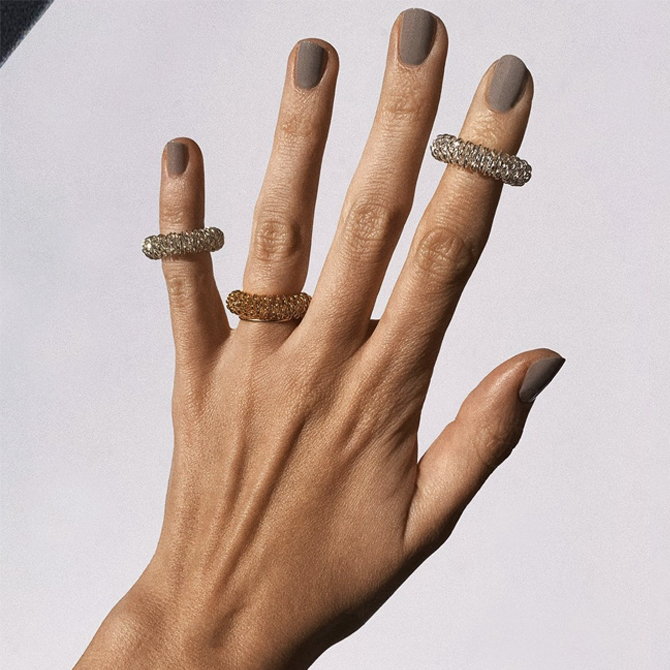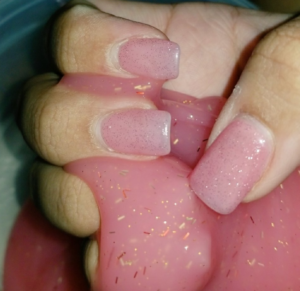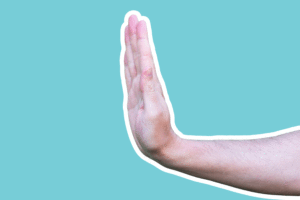How to take care of your hands beyond moisturising—and to prevent arthritis and carpal tunnel

It seems like we must have exhausted the options for hand care by now; we’ve covered moisturising, exfoliating, cuticle care and beyond, you name it. However, there’s one crucial aspect of hand care that we’ve largely neglected to cover, and it goes deeper than skin—it’s hand conditioning.
Not to be confused with the kind of conditioning that gets you softer skin, hand conditioning refers more to the strength and mobility aspects of hand health.
The truth is, your hands are at risk in modern day life—our office jobs have us constantly typing away on our keyboards, clicking our mouses and tapping at our phone screens. While it needs to be done (we’ve all got to make money somehow), there’s no doubt that it all spells out arthritis in the long run.
In fact, let’s take the aforementioned desk job scenario as an example—all that typing you’re doing in the office? That’s a one-way road to carpal tunnel syndrome right there. Your daily yoga sessions or your trips to the gym? That’s a surefire way to overwork your joints, with painful consequences.
View this post on Instagram
The good news is that there are plenty of ways to manage this, as long as you’re as consistent with your rehab as you are with your hand cream.
In a nutshell, you’ll need to start implementing a regular hand conditioning routine as either a preventative or a therapeutic measure (and it doesn’t have to be overly fancy or very long at all).
This is especially important if you’re beginning to feel the buds of pain sprouting in your fingers and wrist. At that point, it’s time to take action ASAP—leaving it too late will mean it’s far less likely that you’ll ever see complete resolve. Plus, the earlier you implement a good physiotherapy routine, the longer you can avoid surgical intervention (not today, carpal tunnel!).
Here are a few general things you can do to keep your hands in tip-top shape:
Increase the strength and mobility in your fingers
Like we mentioned, yoga and bodyweight exercises (think bicep curls) can put lots of strain on your wrists, eventually leading to pain. To prevent this from happening, you’ll want to strengthen your forearm, wrist and hand.
There are a few ways to do this:
1) Use a stress ball to get your muscles pumping and strengthen your fingers

Just give it a squeeze and hold it there for three to five seconds and release. Then, repeat until your forearms feel the burn and you’re good to go. You could also take it one step further and do this one finger at a time, placing the ball between your finger and your thumb. The bonus is that if work is getting a little too overwhelming, this is a great way to let off some steam!
2) Do a few finger extensor exercises
For this exercise, you could invest in a proper finger band, however, in a pinch a rubber band (or a hair tie) works great too. With all the gripping you do in your day-to-day, such as grabbing your barbells or your morning coffee, you need an exercise to antagonise that action and even out your activity.
Another great alternative you can achieve at home with no special equipment is to just use a bucket of rice to add resistance instead (though, it’s safe to say your poor mother won’t be thrilled with this hack). All you have to do is bury your closed fist in the rice, dig it in and open your palm against the resistance. You can even do various twisting exercises to ensure your wrist stability is worked too. If you’re finding it difficult to visualise this, here’s a nifty tutorial to get you going.
3) Get your finger mobility up to scratch with some finger gliding exercises

Finger glides are a really common physiotherapy route employed by climbers to prevent injury, but they’ll work great for anyone who needs to up their finger mobility in general (guitarists may find this especially useful).
Stretch your fingers regularly

FYI: Giving your hands a tug backwards for a few seconds isn’t enough of a stretch. Like how you’d stretch your legs and arms after a workout, you need to make sure you’re stretching your fingers. The best course of action is to get a regular routine going—here is one that works well!
Get a keyboard rest

Your keyboard-and-mouse setup keeps your wrists in constant extension, which may lead to swelling or excessive stress. As a result, your nerve (the median nerve, to be specific) gets trapped within the carpal tunnel of your wrist, a passageway formed by the bone and muscular structures in your wrist. A keyboard rest corrects this constant extension and may therefore prevent these issues from happening, or resolve them if they have!
Hot-cold baths

This technique is also called a contrast bath, or if you’re fancy, a hot/cold hydrotherapy immersion.
It’s pretty much in the name, but this treatment basically involves you dunking your hands into a bath of cold water for a minute, and then immediately dunking them in warm or hot water for another three or four minutes (just be careful not to burn yourself).
Then, you just keep going, alternating for around half an hour. You really don’t have to go overboard on this one—warm and cold water will suffice (you don’t want your fingers to freeze or melt off, that would be counterintuitive!).
The idea is that doing this will help encourage blood flow to your finger joints—the cold bath first causes the vasoconstriction of your blood vessels while the hot bath causes the vasodilation of your blood vessels. By increasing blood flow, the bath helps to reduce the inflammation causing you pain.
It’s a common treatment in athletes used to hasten muscle recovery or in people with arthritis, and it’s really easy to recreate at home with no special equipment. Though, it’s important to note that while a lot of people report that it has helped them, the scientific backing is lacking. However, there’s no reason you shouldn’t give it a shot to see if it helps, especially if you’re already feeling the niggles of pain setting in.
Get a massage

READ: The best spas to head to for a weekend refresh
If your hands happen to be particularly sore, a massage never hurts. Now, you don’t necessarily need to head to your nearest massage parlour or spa to do this—there’s plenty of ways to massage yourself.
Using a ball is a great option, for instance. Take a tennis ball (or any other hard ball) and place it on a flat surface. Then, roll the ball along and up your hands and arms to apply pressure to your palm and forearms.
For your fingers, we’d also recommend you get yourself a few acupressure rings—they’re metal rings that work to stimulate the fingers and activate the acupressure points. The best part? They’re relatively inexpensive and they’ll make your fingers feel brand-new!
Disclaimer: If you suspect that you may be developing more serious joint conditions such as arthritis or carpal tunnel, please go see a doctor. These are preventative tips and are not a replacement for professional medical advice.
For more on body and wellness tips, click here.
| SHARE THE STORY | |
| Explore More |



